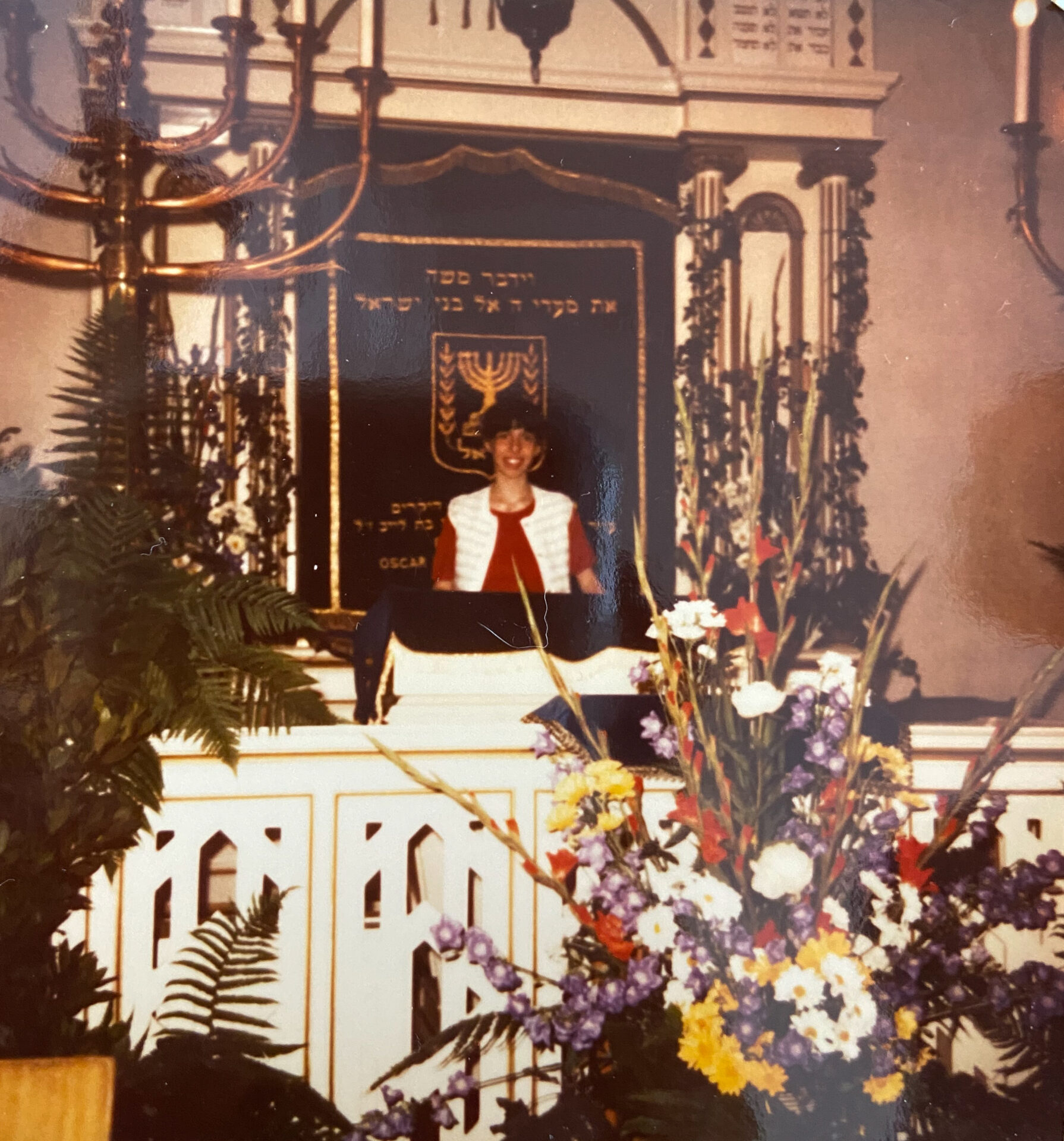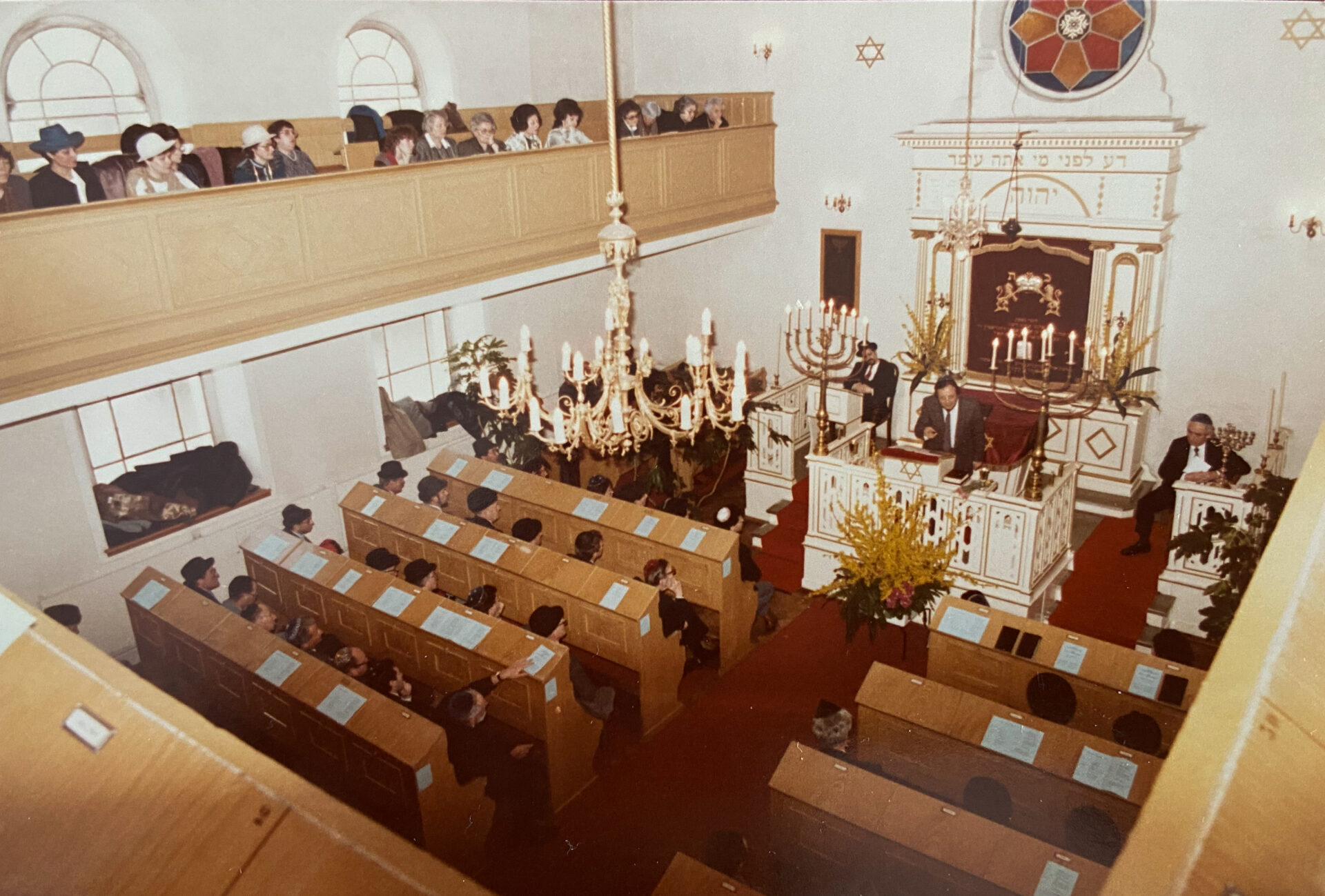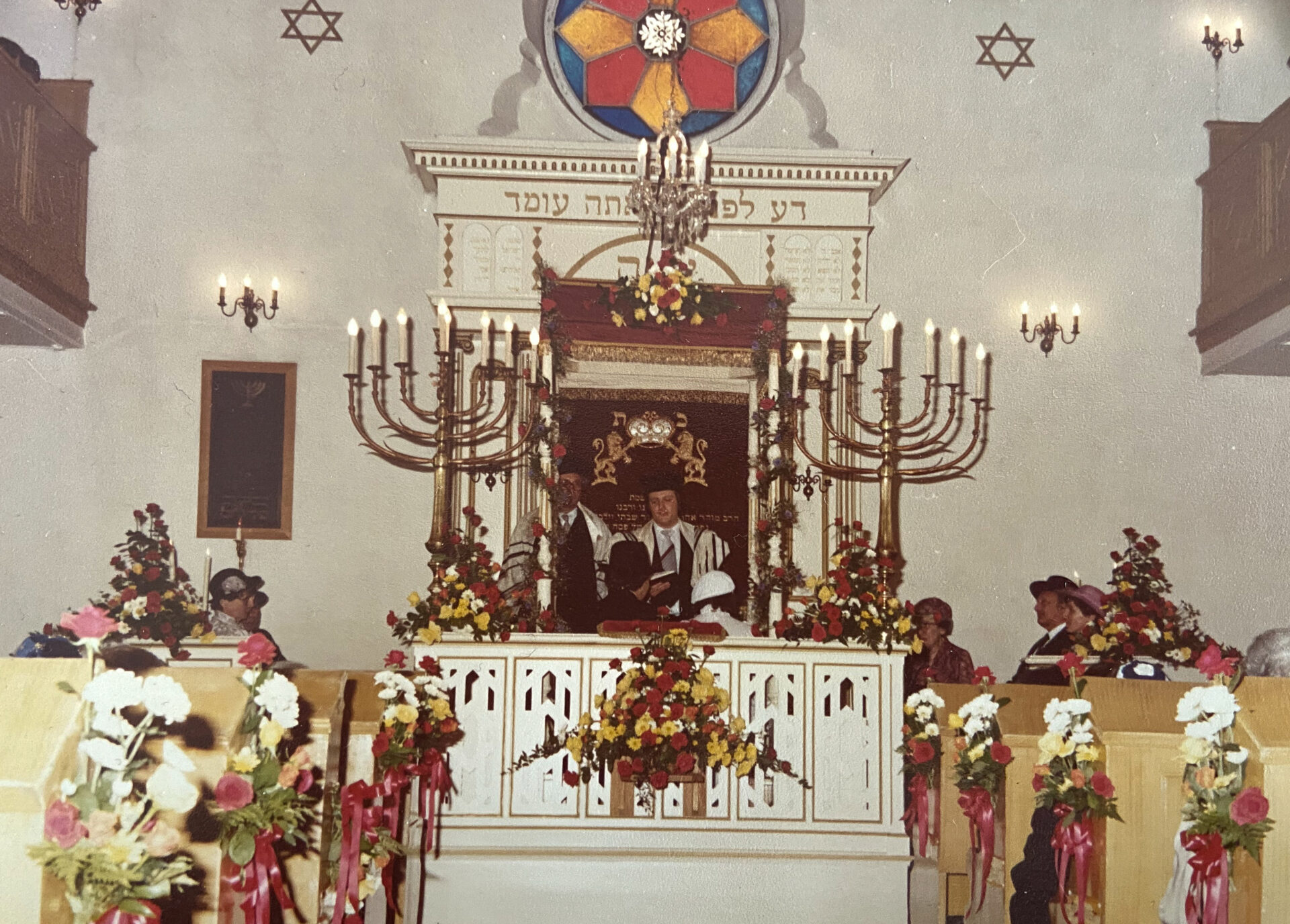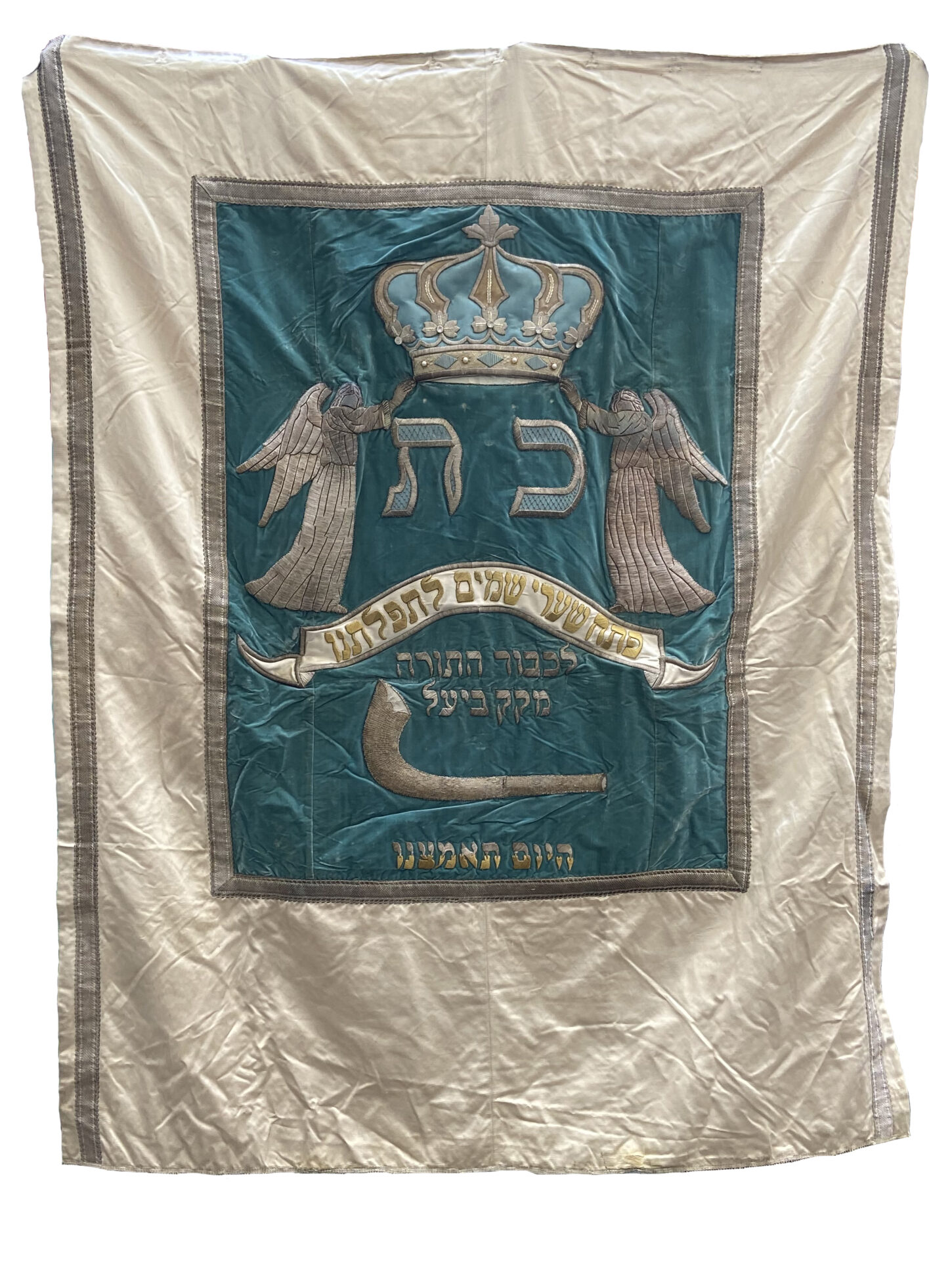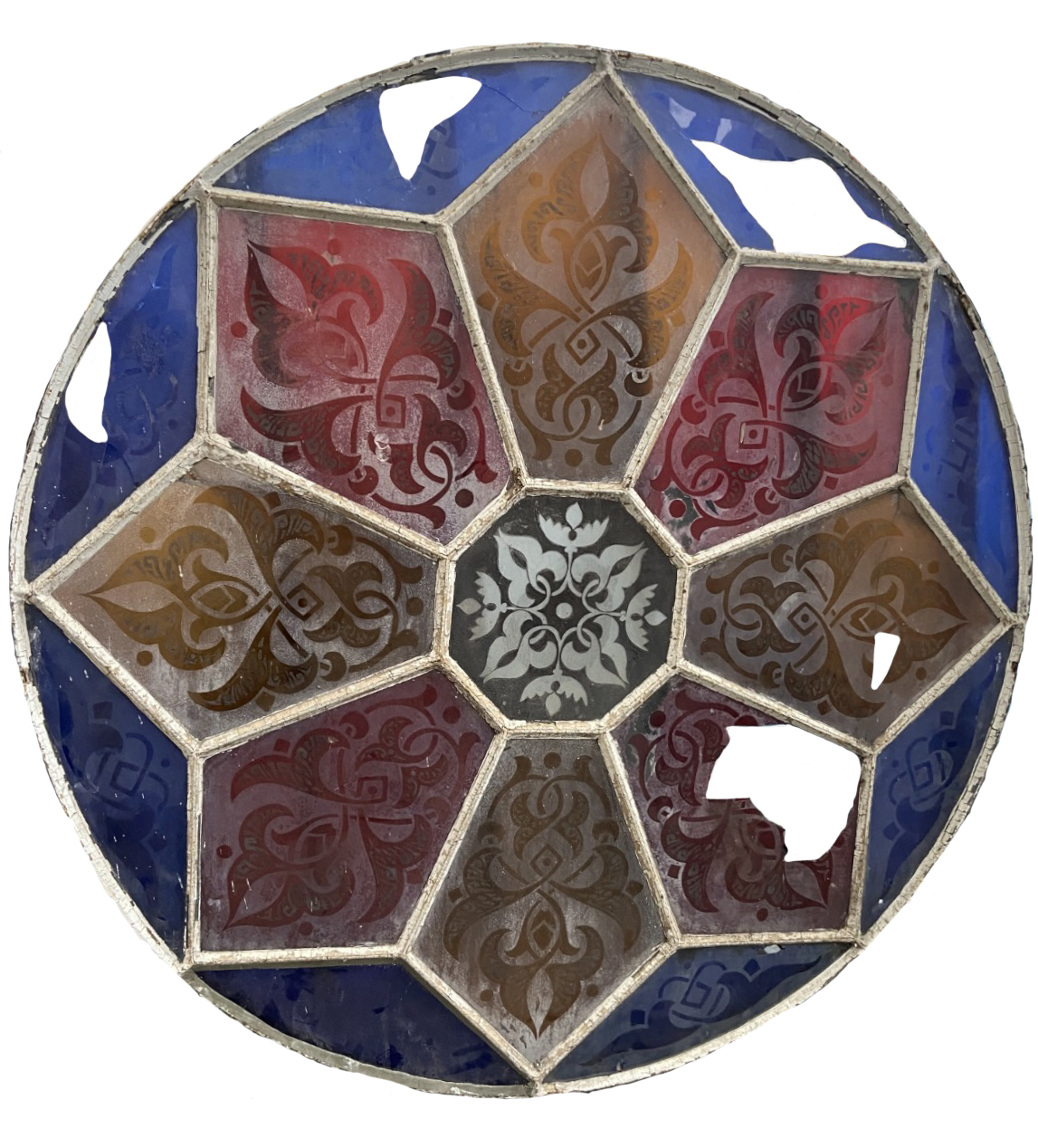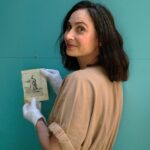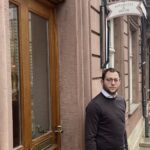«Biel was a socialist, migrant, working-class city.»
Dina Epelbaum on the Jewish community in Biel
In 2022, the Jewish Museum of Switzerland received a donation from the synagogue in Biel/Bienne, including ritual textiles, hats, and a stained-glass window that hung above the Torah ark. Born in Biel and currently curator of the Baselland Art Collections, Dina Epelbaum talks about the synagogue of her childhood, the lives of Eastern European immigrants, and the art of preserving objects with their stories.
Naomi Lubrich: Dina, do you recognize this stained-glass window?
Dina Epelbaum: Of course! It was the light source above the Torah ark in our synagogue in Biel. It was a memorable part of my childhood. When my thoughts drifted, the beautiful window caught my attention. The photo of this fine stained-glass with its floral ornaments takes me back to the 1970s and 1980s. I recall the lively synagogue, hear the singing, and remember the smell of the small building.
NL: As a curator, you read objects as testimonies of their time. What do the Biel objects tell you?
DE: The objects come from a small but vibrant community. The synagogue from the end of the 19th century was built in the so-called «Moorish style», was tastefully furnished and well-maintained. Many Jews were watchmakers, so-called Westjuden (western Jews) originally from Alsace. Joining them were Ostjuden (Eastern Jews) from eastern Europe, among them my grandfather. He came from Ukraine at the beginning of the 1930s. Many eastern Jews were Zionists, religious; many were poor. Biel was a welcoming place for them: Elected in 1921, the Social Democratic mayor Guido Müller accepted immigrants to Biel and provided affordable and modern housing. At that time, Biel was a socialist, migrant working-class city.
NL: As a curator, your approach is holistic. In addition to objects, you collect their stories. How do you go about it?
DE: Objects come alive through stories. That’s why I would record as much information as possible. I’d do it sooner than later, because it’s hard to catch up later. I would talk to members of the community. There are not many left in Biel, their number has shrunk considerably. I would ask them for photos, letters and souvenirs. I would read the pertinent literature, for example «Heimat Biel» (Chronos 2011), and look at past exhibitions, for example «Das Rote Biel» (Neues Museum 2021). And one more thing: Since the Jewish Museum has only part of the synagogue’s estate, I would note where the other items are, to keep an overview.
NL: You celebrated your Bat Mitzvah in this synagogue and were, together with three others, the first girls to read from the Torah. Were you aware what a turning point this was?
DE: No, I didn’t give it much thought. Back then, a bat mitzvah was not celebrated as enthusiastically as it is today. I remember that my parents were very committed to allowing girls to celebrate their bnot mitzvah in Biel. In the early 1980s, that was not a matter of course. We were four girls, three Romandes and myself, who celebrated together. I remember the synagogue decorated with flowers and a meal together in the community hall. Recently I found the speech my father wrote for me, with a quote from the Book of Ruth, which is read on Shavuot.
NL: Dear Dina, thank you very much for sharing your memories.
verfasst am 15.05.2023
©Illustration: Marva Gradwohl




